Nicolai Fechin (1881-1955)
Get a Fechin Certificate of Authenticity for your painting or a COA for your Fechin drawing or sculpture.
For all your Fechin artworks you need a Certificate of Authenticity in order to sell, to insure or to donate for a tax deduction.
How to get a Fechin Certificate of Authenticity is easy. Just send us photos and dimensions and tell us what you know about the origin or history of your Fechin painting, drawing or sculpture.
If you want to sell your Fechin painting, drawing or sculpture use our selling services. We offer Fechin selling help, selling advice, private treaty sales and full brokerage.
We have been authenticating Fechin and issuing certificates of authenticity since 2002. We are recognized Fechin experts and Fechin certified appraisers. We issue COAs and appraisals for all Fechin artworks.
Our Fechin paintings, drawings and sculptures authentications are accepted and respected worldwide.
Each COA is backed by in-depth research and analysis authentication reports.
The Fechin certificates of authenticity we issue are based on solid, reliable and fully referenced art investigations, authentication research, analytical work and forensic studies.
We are available to examine your Fechin painting, drawing or sculpture anywhere in the world.
You will generally receive your certificates of authenticity and authentication report within two weeks. Some complicated cases with difficult to research Fechin paintings, drawings or sculpture take longer.
Our clients include Fechin collectors, investors, tax authorities, insurance adjusters, appraisers, valuers, auctioneers, Federal agencies and many law firms.
We perform Nicolai Fechin art authentication, appraisal, certificates of authenticity (COA), analysis, research, scientific tests, full art authentications. We will help you sell your Nicolai Fechin or we will sell it for you.

Nicolai Fechin was born in 1881 in Kazan, Russia. At age eleven, he drew designs that his father used in the construction of altars. When he was thirteen, he enrolled at the Kazan School of Art. At the Imperial Academy of Arts in Saint-Petersburg he studied with Ilya Repin and Filipp Malyavin. In 1909 he graduated with the highest grade possible and his final competitive canvas won him the Prix de Rome, a traveling scholarship, that allowed him to roam the artistic capitals of Europe in 1910. Within this year he first began exhibiting his art in America, one exhibit was an international exhibition at the Carnegie Institute in Pittsburgh.
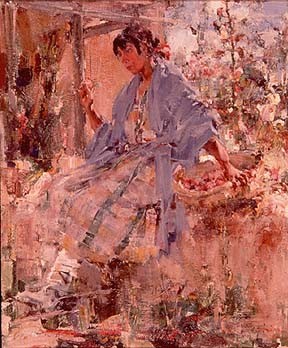
When Fechin returned from traveling, he resumed teaching at Kazan where he taught for ten years and, in 1913, married the daughter of the director. He was a popular instructor. Because he was mostly self-taught, he was apt to give instruction in a manner less demanding than the grueling exercises he was forced to complete at the Academy. In 1910 he was a founder of the Commune of Artists, and he exhibited with the Itinerants from 1912 to 1922 and with the Academy of Artists of Revolutionary Russia (AKhRR) from 1922 to 1926. In addition, he was also a theater artist from 1920 to 1922.
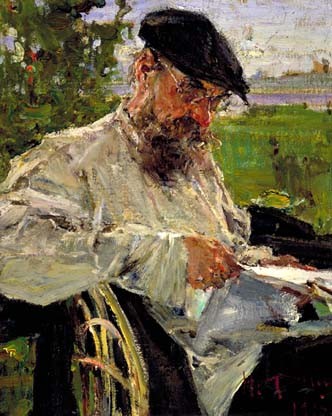
In 1923 he emigrated to the United States and landed in New York. He was already well known in the States from canvases sent to American and European exhibitions. In fact, it was his American friends and patrons that helped him leave Russia. His portraits were in demand immediately and he won the first prize at the Academy in New York in 1924 and a medal at the 1926 International Exposition in Philadelphia.
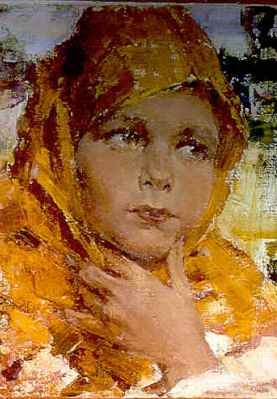
Fechin became well-known for his powerful portraits that always seemed to radiate from the eyes of the subject. Some of his more renowned subjects are Nikolai Lenin, Karl Marx, Frieda Lawrence and Lillian Gish. At an early age he had learned carving and produced impressionistic sculpture primarily from wood. At the Academy he used other materials but he was impatient about the necessary construction of armatures and had no care for the seemingly endless casting processes, while the creative process became the lesser part. With wood he could begin creating immediately.

Fechin almost died from meningitis as a child and unfortunately developed tuberculosis when he was in New York. Doctors told him to move to a dryer climate which sent Fechin traveling west. He eventually moved to Taos, New Mexico in 1927. The Taos mountains reminded him of the beauty he had seen in Siberia. He soon painted with fervor and felt particularly close to the Indians. His greatest American works were of the Native Americans. Fechin had great affection for Taos and became a naturalized American citizen while living there. He built a house in Taos of which he carved the doors, the window frames, the pillars, the furniture, and designed the adobe structure.
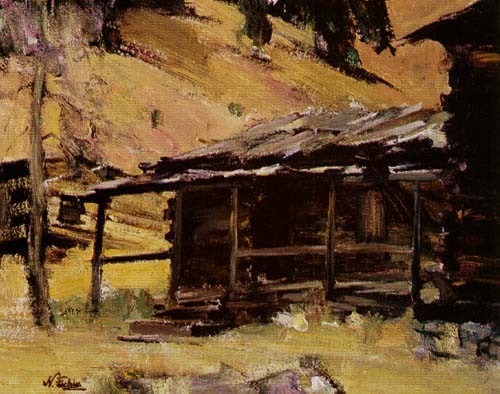
He stopped building when he and his wife divorced. He left the house in Taos and went back to New York with his daughter for the winter. After New York, he traveled to Southern California, Mexico, Japan, and the Pacific Islands of Java and Bali. Soon he bought a spacious house in Hollywood, but quickly sold it and moved into a studio in Santa Monica in 1948. There he taught small groups of students, painted, and happily entertained guests in his studio. In 1955 he passed away in Santa Monica, California. Some paintings and portraits along with his work table and easel are on display at the National Cowboy Hall of Fame and Western Heritage Center, and the rest of his works are displayed in different countries around the world.
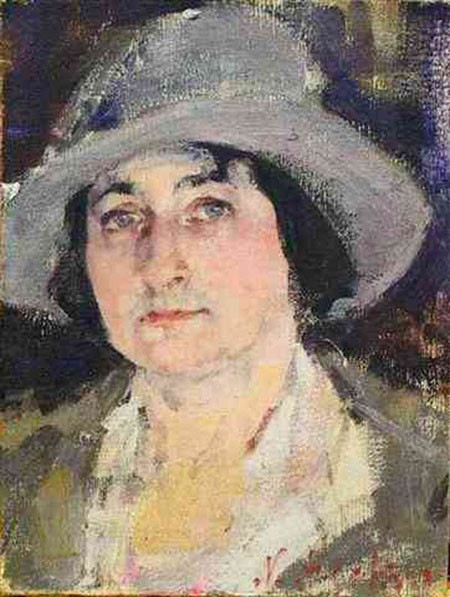
Still wondering about a 20th century Russian painting in your family collection? Contact us…it could be by Nicolai Fechin.
Reviews
1,217 global ratings
5 Star
4 Star
3 Star
2 Star
1 Star
Your evaluation is very important to us. Thank you.
